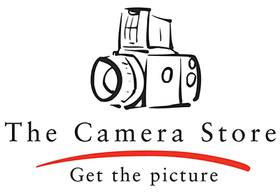In the latest TCSTV episode, Dave takes a closer look at focal length and what that means when choosing a Sony lens. When starting photography, choosing a lens can be a bit overwhelming, especially when there are so many Sony lenses on the market. Luckily Dave is here to talk about the basics, answer some important questions and help you find the right Sony lens for your photography style!
Taking a look at a selection of Sony lenses from 14mm up to 600mm, the first question that comes to mind is, what do those numbers even mean? Dave goes a bit techy explaining how when 35mm format (digital equivalent is full-frame) film was the way to create cinema, people wanted to replicate how the human eye would see the world, but on a film plane. This is when the 50mm lens was created. A 50mm most closely replicates what the human eye sees, perspective-wise, meaning if you look at your subject through a camera with a 50mm lens, then look at it with your naked eye, your subject will appear the same size. But this leads to the next question, why 50mm and not a different number?
Dave comes in with more tech talk and some lovely visual aids. In the camera is the sensor or focal plane, and in the lens is the point of convergence. The point of convergence is where all the light comes together to a single point inside the lens – think of a magnifying glass moving it until you have focused it to one point – that light is then spread across the sensor. The distance from the point of convergence to the focal plane is the focal length.

Dave then explains that the different sizes in lenses come from the varying distances in focal length. A 14mm lens will be much smaller than a 600mm lens because the point of convergence will be very close to the camera’s focal plane at only 14mm. A 600mm lens will be large because the distance from the point of convergence to the focal plane is significantly longer.
With all this information, how does one choose the right lens for their Sony full-frame camera? There is no real right or wrong lens, however, there are lenses that are better for certain types of photography than others and create different looks. A 50mm is a great starting point for new photographers, but if you want to get more of the surrounding view, a wide or ultra-wide angle might be a better choice. A 24mm is a very popular wide-angle lens and will make your subjects about half the size they would be with a 50mm. For math lovers, when you take 50 and divide it by 24, you get just slightly over two, or roughly half the size.
A 14mm is an ultra-wide lens, which is an excellent choice for cityscapes and cloudscapes but not a great choice for portraiture as it really distorts the person’s face. Moving in the opposite direction, Dave looks at an 85mm and 135mm lens, which brings things much closer than how the human eye would see and cuts out the background a lot more. These lenses are excellent for portraits as they create beautiful background blur and give a natural, crisp image.

Looking at Sony’s large 600mm lens, it’s the perfect lens for photographing birds in flight, sports like football or soccer, wildlife or anything far away where you want to bring your subject in much closer. For the math lovers again, when you take 600 and divide it by 50, you get 12, meaning subjects will be 12 times closer than what we can see with the naked eye.

Now that we’ve looked at lenses from 14mm all the way up to 600mm, hopefully, Dave was able to help clarify what focal length means and give you a better idea of what Sony lens is best for you! Of course, we always recommend trying a bunch to see what you like and don’t like, so if you have questions or would like to test any cameras out, we are here to help! You can always email us at info@thecamerastore.com to talk with our staff about what lens is best for you!
Click here to shop our Sony FE Lenses!
Watch our TCSTV Episode, How to Choose the Perfect Focal Length for Your Photos, below!



